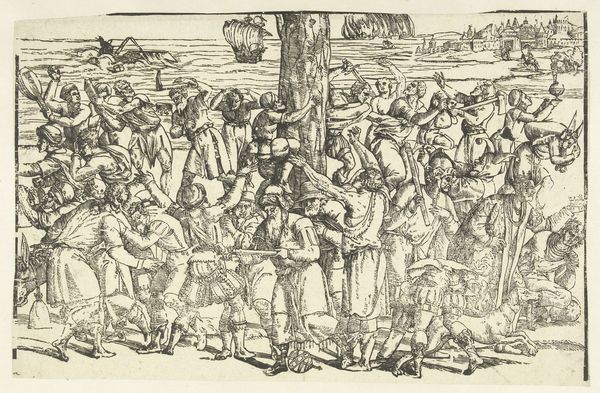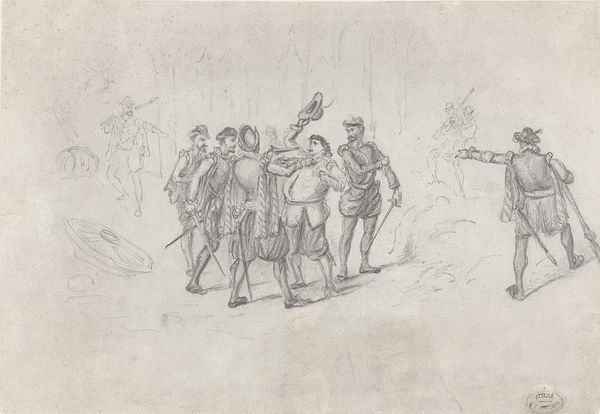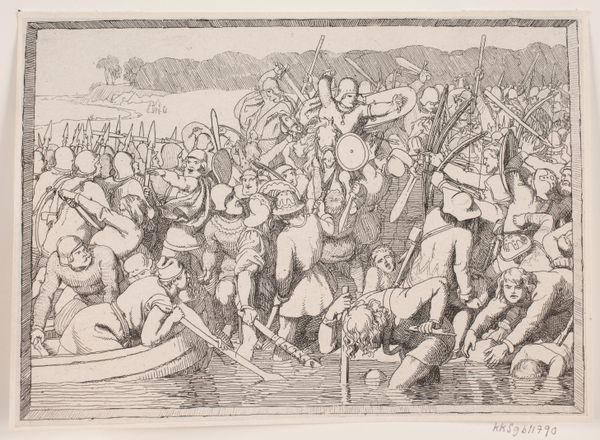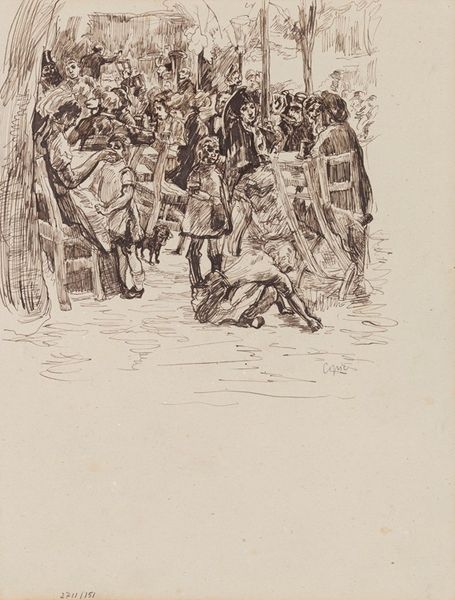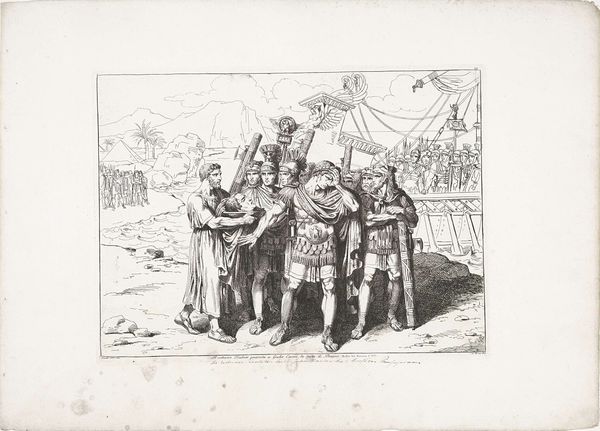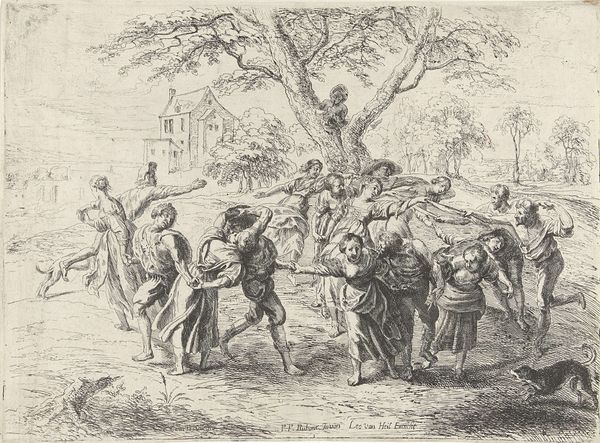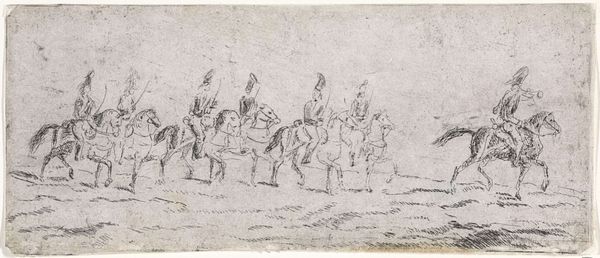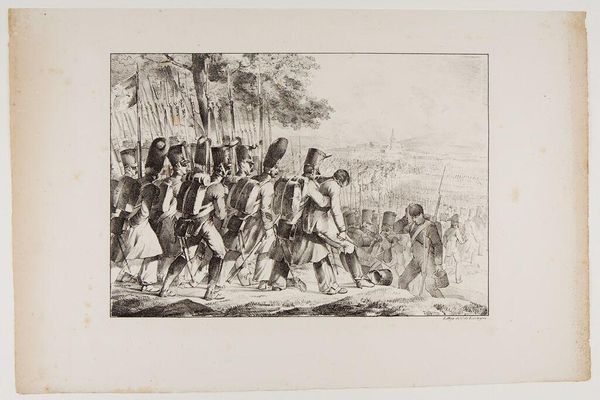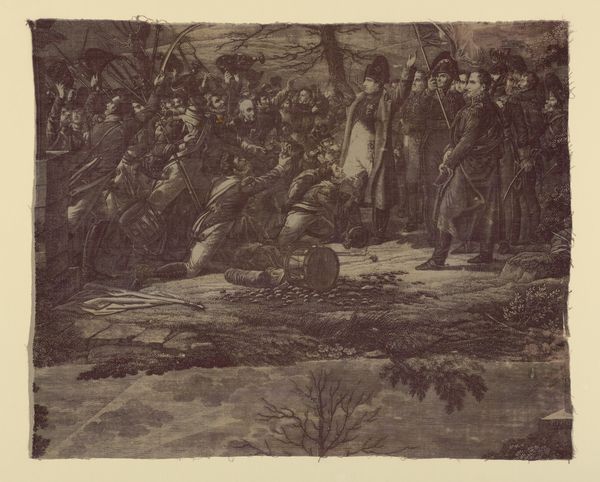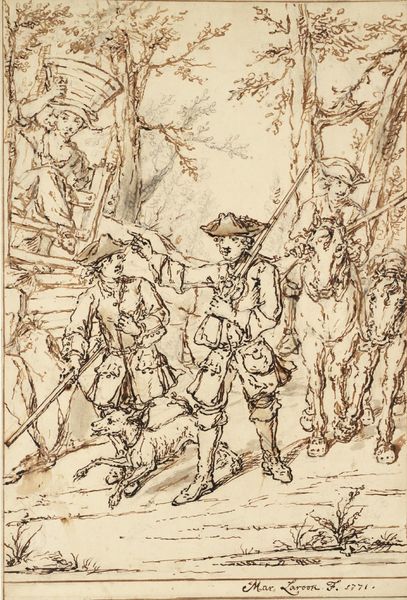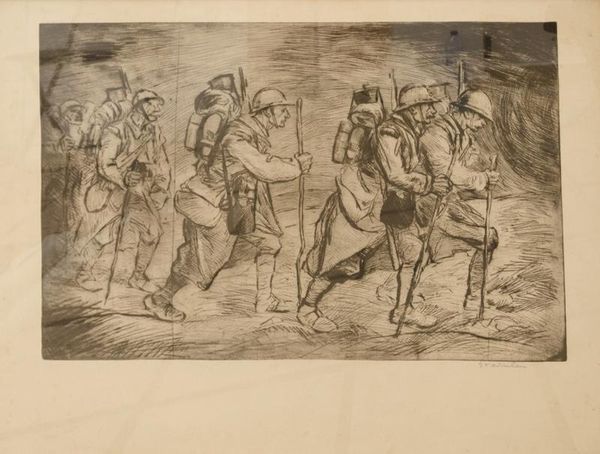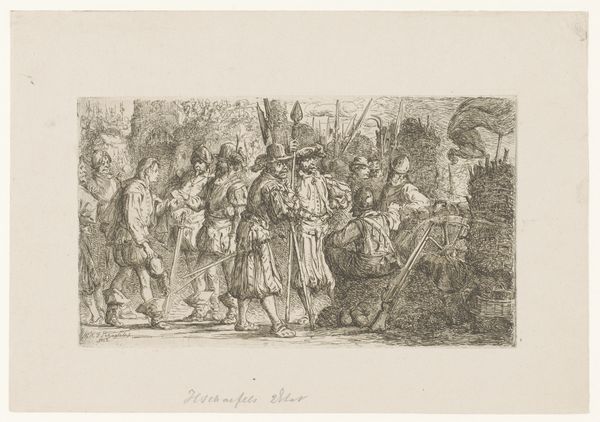
aquatint, print, etching
#
aquatint
# print
#
etching
#
landscape
#
figuration
#
history-painting
#
realism
Dimensions: 11 11/16 x 15 5/8 in. (29.69 x 39.69 cm) (plate)
Copyright: Public Domain
Editor: This is Pierre-Georges Jeanniot's "Bataillon en marche," a 19th-century print combining aquatint and etching. The weight of the soldiers' packs really comes through, doesn't it? It gives the piece a somewhat burdened mood. What do you see in this work? Curator: Beyond the literal depiction of a marching battalion, I see a critical commentary on military life, especially considering the sociopolitical landscape of 19th-century France. Note how Jeanniot avoids idealizing war; the soldiers seem weary, almost anonymous. How might this realism challenge dominant narratives around national pride and militarism during this period? Editor: So, it's less about glorifying war and more about showing the reality of it for the individual soldier? Curator: Precisely. Think about who these soldiers might be – likely men from working-class backgrounds, compelled by conscription. Jeanniot is, in a sense, giving visibility to the experiences often overlooked in grand historical narratives. How does the print's emphasis on their physical burden – the heavy packs, the trudging gait – speak to this social commentary? Editor: It definitely brings their humanity to the forefront, stripping away any romanticism. It’s a powerful statement. Curator: And consider the printmaking techniques - etching and aquatint. How does the use of line and tone contribute to the overall atmosphere? Does the lack of color further enhance the somber mood? Editor: Good point, it absolutely does. Focusing on their weary march really highlights the human cost of conflict, especially within the broader social and political context. I appreciate you making me see the nuances beyond the initial impression! Curator: Absolutely. Exploring the socio-historical context opens a deeper understanding of art, allowing us to connect the past with present-day conversations around power, representation, and social justice.
Comments
No comments
Be the first to comment and join the conversation on the ultimate creative platform.
